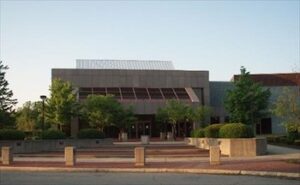
The National Afro-American Museum and Cultural Center
The National Afro-American Museum and Cultural Center was celebrated on this date in 1987. The concept of a national museum dedicated to African American history and culture can be traced back to the second decade of the 20th century.
In 1915, black veterans of the Union Army met in Washington, D.C., for a reunion and parade. Its mission is to chronicle through its collections and programs the rich and varied experiences of African Americans from their African origins to the present. Frustrated with the racial discrimination in the post-Reconstruction Era, these veterans formed a committee to build a memorial to various African American achievements.
Their efforts paid off in 1929 when President Herbert Hoover appointed Mary Church Terrell, Mary McLeod Bethune, and ten others to a commission to build a "National Memorial Building" showcasing African American achievements in the arts and sciences. However, Congress did not back the project, and private fundraising failed. Although proposals for an African American history and culture museum were in Congress for the next 40 years, they gained minimal support. Proposals began circulating again in Congress in the early 1970s. At the same time, state officials in Ohio were also attempting to establish an African History Museum.
Wilberforce had been a significant stop on the Underground Railroad (which helped enslaved black people find safe passage through northern states and into Canada) and the former site of Wilberforce University. In 1972, the state passed legislation agreeing to build a museum in Wilberforce. In 1981, Congress approved the creation of a National Afro-American Museum in Wilberforce.
The museum is at 1350 Brush Row Road, next to Central State University. It is one of many museums operated by the Ohio History Connection. The museum, built and funded with private money, opened in 1987. It is a specialized institution because it focuses only on a single aspect of African American history. The museum houses the papers of Ira Tucker, a singer with the gospel music group Dixie Hummingbirds. The museum screens a film, Music as Metaphor, which showcases some of the most popular African American musicians and singers of the Era and looks at how their music echoed the themes of the American Civil Rights Movement.
In February 1992, the Association of African American Museums began renting space from the museum. The museum has hosted several important exhibits. In 1998, the museum held a first-of-its-kind exhibition of African American dolls. (The museum has the third-largest collection of African American dolls in the United States.) Barack Obama's election as President of the United States led to a major exhibit in late 2009 at the museum, in which 95 quilts inspired by Obama's election were displayed. The museum is a Modernist structure of glass and steel, with about 10,000 square feet of exhibits. Dr. John Fleming led the museum from 1988 to 1998. Mr. Vernon S. Courtney led the museum from 1999 to 2007.
On January 5, 2011, the museum closed abruptly after discovering an extensive mold and humidity problem. The museum had suffered from roof leaks and mold-infested the building's HVAC system. Ms. Edna Diggs, a curator at the National Afro-American Museum and Cultural Center, was appointed Interim Director. She died on June 6, 2011. Dr. Floyd Thomas was named acting director of the museum until museum archivist Dr. Charles Wash was named the director in late 2011. Museum director Dr. Wash said the museum would be closed for at least three months while a $433,000 cleanup began.
In November 2011, the museum received a significant donation of papers, letters, photographs, and memorabilia from the estate of Colonel Charles Young. Young was the highest-ranking black officer in the United States Army until he died in 1922. The museum reopened on January 27, 2013, following renovations, mechanical system upgrades, and artifact conservation. It took until 2016 for these efforts to be successful with the opening of the Smithsonian Institution's National Museum of African American History and Culture.
In October 2016, the museum opened Kojo: Eyewitness to History, a retrospective of the work of Columbus photographer Kojo Kamau, known as Kojo. For over 50 years, Kojo photographed notable African Americans from Muhammad Ali to President Barack Obama. In May 2017, the museum opened Freed Will: The Randolph Freedpeople from Slavery to Settlement. This exhibit featured photographs and letters of nearly 400 newly emancipated people who journeyed from Charlotte County, Virginia, to Ohio's Miami Valley.